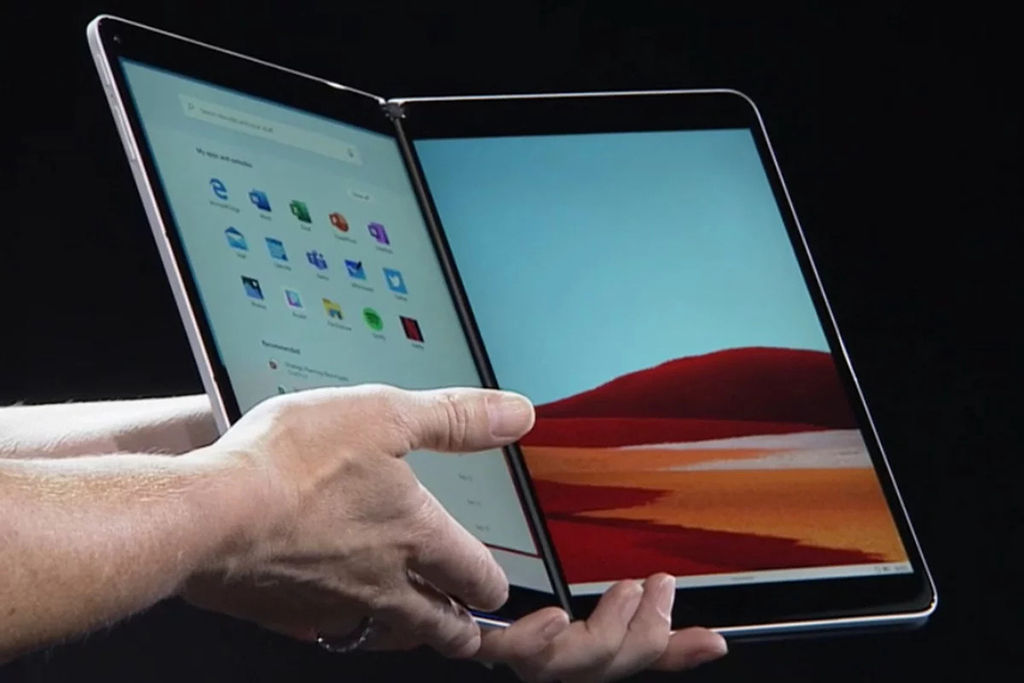Photo: MicrosoftOn Thursday we reported of Microsoft unveiling its next generation of Surface devices including the dual-screen Surface Neo tablet and the Microsoft Surface Duo, a smaller device that seems to be for all intents and purposes a new Microsoft foldable phone.We also said that Surface Duo will have Android instead of Windows OS. However, Neo will brag with the new variation of Microsoft’s operating system to keep track of: Windows 10X.Microsoft is constantly trying to push its Windows everywhere, and the new OS builds, with the codename Santorini, on top of the basic foundation or core of Windows 10, which is known as Windows Core OS.We still don’t know much about Windows Core OS, but Windows Central has a good explanation: They describe it as the basic building blocks of
Topics:
Teuta Franjkovic considers the following as important: asus, composable shell, cshell, dell, Editor's Choice, hp, Internet of Things (IoT) News, lenovo, microsoft, microsoft surface duo, microsoft surface neo, News, Technology News, windows, windows 10x
This could be interesting, too:
Bilal Hassan writes Morocco Cracks Down on Crypto Property Deals
Bilal Hassan writes Crypto Becomes a U.S. ‘Weapon,’ Says CryptoQuant CEO
Bilal Hassan writes White House Crypto Czar Sold Holdings After Trump Took Office
Bilal Hassan writes CZ Suggests Safe Token Release Based on Price Growth

Photo: Microsoft
On Thursday we reported of Microsoft unveiling its next generation of Surface devices including the dual-screen Surface Neo tablet and the Microsoft Surface Duo, a smaller device that seems to be for all intents and purposes a new Microsoft foldable phone.
We also said that Surface Duo will have Android instead of Windows OS. However, Neo will brag with the new variation of Microsoft’s operating system to keep track of: Windows 10X.
Microsoft is constantly trying to push its Windows everywhere, and the new OS builds, with the codename Santorini, on top of the basic foundation or core of Windows 10, which is known as Windows Core OS.
We still don’t know much about Windows Core OS, but Windows Central has a good explanation: They describe it as the basic building blocks of Windows of the next generation, cleared out to its basics, which Microsoft can then build on top when it needs to adapt Windows to a new form factor.
Joe Belfiore, head of Windows experiences, said:
“We see people using laptops. We see people using tablets. We saw an opportunity both at Microsoft and with our partners to fill in some of the gaps in those experiences and offer something new.”
When saying ‘new form factor’ it is meant, for example, AR headsets or dual-screen tablets. Rather than starting from scratch, Microsoft decided to create Windows 10X by building it on top of Windows Core OS.
The Windows Core OS is built on Universal Windows Platform (UWP) apps, and it aims to be available on multiple types of hardware, from HoloLens headsets to Surface 2-in-1s.
This also means Windows Core OS is adjustable with all the extra parts that originally aren’t incorporated in Core OS, can now be plugged in—sort of a support for legacy Win32 desktop applications, that Microsoft has added in Windows 10X.
However, Win32 component can be disabled when you’re not using it and therefore, prolong your battery life on the dual-screen tablet.
Microsoft corporate VP Eran Megiddo wrote:
“We didn’t wipe the slate clean and start over with a brand-new operating system. Our approach is an evolution of where we’ve been going with Windows 10 for the last few years. For those of you not familiar, there are a common set of shared technologies in Windows 10 that unlock a whole host of devices across the spectrum from consumers to businesses and industries. Internally, we call these shared technologies ‘one core’ but what matters most to customers is what they enable.”
New Project CShell Hill for the ‘Smoother’ User’s Interface
Windows 10X is made especially for new, dual-screen devices, and you won’t be running it on your desktop or laptop computer for now. It has been designed to let users work on two screens that are mutually connected.
Also, together with the Windows Core OS, Microsoft is evolving a new project dubbed CShell, or Composable Shell. This project is focused on a user interface that can be modified to fit any screen of any size, in a softer way than the Surface devices currently flip between desktop and tablet mode. Different parts of the UI could be enabled and disabled as the form factor changes but it’s still a work in progress (that’s why the company decided to run Android on its Surface Duo).
Windows 10X devices are also planned to run on Dell, HP, Lenovo, and Asus, but in a year so the company has time to evolve Windows Core OS and Windows 10X to perfection.
